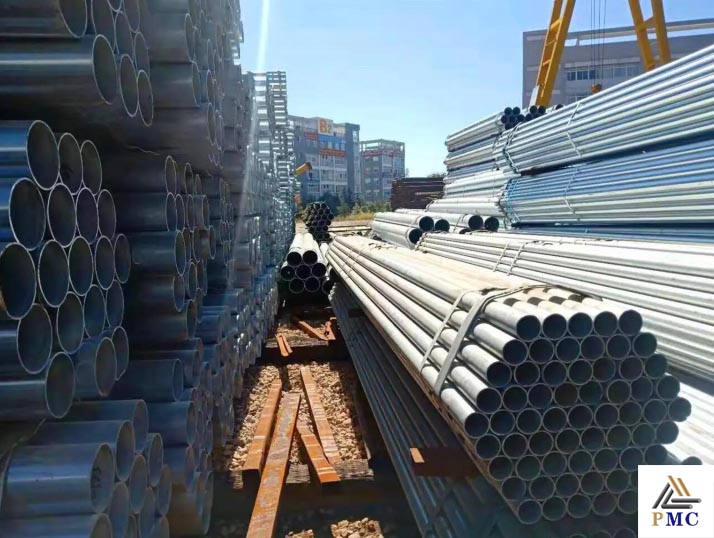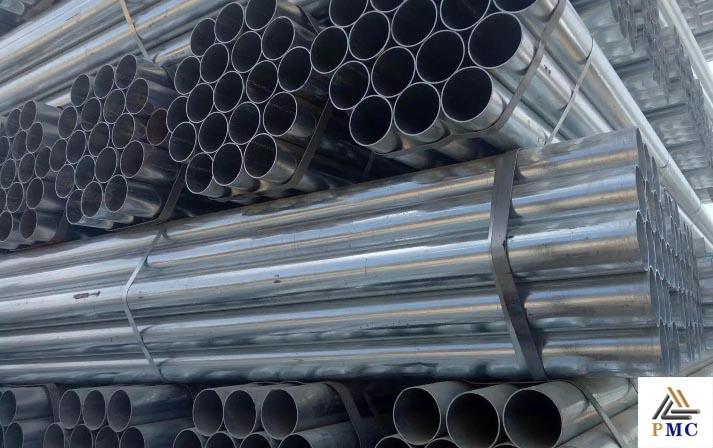
Introduction and Advantages of Galvanizing Process
Galvanizing (such as galvanized seamless pipe) is the process of adding a zinc coating to the surface of steel or iron. Since zinc acts as a sacrificial coating, it protects the underlying steel or iron, thus extending the life of metal components.
But galvanizing is a complex process that can be done in a number of ways. Different forms of galvanizing exist, including hot-dip galvanizing and hot-diffusion galvanizing, and these variations have advantages and disadvantages. Therefore, it is helpful to understand the different forms of galvanizing before incorporating it into a prototyping or manufacturing project.

Galvanized metal is more common than you might think. Structures such as building frames, metal benches, balconies, ladders and fire escapes can all be made from galvanized metal to ensure longer life and adequate corrosion and damage protection. Other examples can be found in auto parts and appliances.
In addition, galvanized steel and galvanized iron can be used in different manufacturing processes, from sheet metal processing to CNC machining, making it the dominant process in manufacturing.
This article reviews the basics of galvanizing, answering questions about what galvanizing is, which metals can be galvanized, what galvanizing is used for, types of galvanizing, and how galvanizing can improve metal parts.
1. What is electroplating?
Galvanizing is the process of adding a layer of zinc to the outer surface of metal (i.e. steel or iron). The purpose of this is to add a protective coating to the underlying metal, reducing the chance of corrosion or rusting.
The galvanizing process varies depending on the specific technology. However, the most important part of the process is that it usually involves surrounding steel or iron in zinc, which may be in a liquid or dusty state. When zinc is introduced, the iron in the surrounding metal reacts with the zinc to form a tightly bound alloy coating.
The end-to-end galvanizing process can be divided into three stages:
a. Prepare the surface of steel or iron
b. Actual electroplating
c. Surface treatment after galvanizing
Galvanizing is a relatively simple coating process, and it produces a fairly nice finish, typically around 80mm, which is about three times thicker than that produced by electroplating.
2. Galvanized material
The main substrates that can be galvanized are steel (eg carbon seamless steel pipe) and iron. However, other ferrous metals can also be galvanized.
The coating material in galvanizing is always zinc. However, a similar process to galvanizing is tinning, which is suitable for simple applications such as food storage, but is not as reliable as galvanizing. If the coating is damaged, the tin can attack the iron underneath.
3. Galvanized type
The two most popular forms of galvanizing are hot-dip galvanizing and electro-galvanizing. These two methods and others are discussed below. Knowing which type of galvanizing to choose may require the help of an expert.
1) Hot dip galvanized
During hot dip galvanizing, the metal is immersed in a hot zinc bath at about 450°C. When it is removed, the coated surface reacts with oxygen to form zinc oxide, which then reacts with carbon dioxide to form zinc carbonate. Before galvanizing, the metal must be cleaned with a caustic solution and then pickled in an acidic solution; zinc ammonium chloride can also be used to prevent premature oxidation of the metal prior to galvanizing.
2) Electro-galvanized
Electrogalvanizing combines galvanizing with electroplating: an electric current is passed through a zinc bath with a zinc anode and a steel conductor. The process produces a thinner coating than hot dip galvanizing and also produces a brighter surface finish suitable for cosmetic applications.
3) Sherardization
This form of galvanizing is known by several names: hot-diffusion galvanizing, vapor galvanizing, and dry galvanizing. It involves heating steel parts to 500°C in a closed rotating drum containing zinc powder. The evaporated zinc diffuses onto the surface of the steel to form a firmly bonded coating. It is ideal for small parts and parts that need to be coated on the inside.
4) Galvanized
Galvanizing is a combination of hot-dip galvanizing and annealing. The hot dip galvanizing process proceeds normally, before the coated metal is passed through an air knife to remove any excess zinc. The metal is then briefly heated in an annealing furnace at 500–565°C to interdiffuse the iron and zinc layers and form a zinc-iron alloy layer.

4. The advantages of galvanizing
The purpose of galvanizing is to create a protective coating of zinc on steel or iron parts. But why is this useful? What are the main advantages of galvanizing?Blocks Corrosive Substances: The zinc coating on galvanized metal prevents corrosive substances from reaching the weaker underlying substrate metal. This extends the life of the substrate, especially in demanding applications.
Rust Prevention: Galvanizing significantly delays rusting.
Creating a sacrificial anode: The zinc coating is consumed by corrosive substances, so it provides protection to the metal below until it is completely used up. Even if scratches penetrate the coating, the zinc will run out before the iron.
Durable: The zinc coating formed by galvanizing is tough and long-lasting, often providing decades of protection to the underlying metal.
Affordable: Galvanizing is a fairly simple and affordable procedure that offers significant benefits with minimal outlay.
Forms Thick Coatings: Although not suitable for all applications, galvanizing produces thicker coatings than electroplating etc.
5. Application of galvanizing
The ability to prevent corrosion in steel has made galvanizing widely used in several industries.The most common application is galvanized steel for construction: hundreds of thousands of tons of galvanized construction steel are produced annually to make structures such as building frames, street furniture, fire escapes, ladders and balconies.
Galvanized steel is also common in the auto industry, where it can be made into rust-resistant parts, including most of a car's "body-in-white": its skeletal base. Bumpers, beams, frames and chassis can also be made from galvanized steel.
Rust prevention is a desirable feature in the telecommunications industry, where telephone lines and electrical boxes are affected by these elements on a daily basis. Galvanizing helps extend the life of such items.
6. Made of galvanized metal
Galvanized materials can be widely used as galvanized metal sheets for sheet metal manufacturing processes such as bending and stamping, or galvanized metal bars, tubes and bars for processes such as CNC machining.
Galvanized materials tend to be easier to machine because the zinc coating is softer than the underlying steel.
Galvanized metal can also be welded, but zinc emits dangerous fumes, so proper ventilation is critical. Painting is not particularly effective on galvanized steel or iron unless the material is galvanized.
Go here to learn more about "Seamless Steel Pipe Pickling Process"


